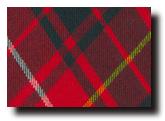 From Normandy in France, the name probably comes from "Brix" near Cherbourg. Like many of the early Scots nobility, the first Robert de Brus came over with William the Conqueror in 1066. A later Robert de Brus accompanied King David I when he returned to Scotland in 1124 from his sojourn in England. The family became established in Annandale in what is now Dumfries and Galloway. The family also owned extensive lands in England. As a result of marriage to the daughter of King David, Robert de Brus became Earl of Huntingdon.
From Normandy in France, the name probably comes from "Brix" near Cherbourg. Like many of the early Scots nobility, the first Robert de Brus came over with William the Conqueror in 1066. A later Robert de Brus accompanied King David I when he returned to Scotland in 1124 from his sojourn in England. The family became established in Annandale in what is now Dumfries and Galloway. The family also owned extensive lands in England. As a result of marriage to the daughter of King David, Robert de Brus became Earl of Huntingdon.
At one point, when King David invaded England, Robert de Brus gave up his holdings in Annandale to his son and joined the English forces. He later captured his son at the Battle of the Standard in 1138. Generations after that, Robert the Bruce, Earl of Annandale, became ruler of an independent Scotland and achieved the great victory at Bannockburn over Edward II in 1314.
The royal line died out 50 years later when the first Stewart monarch ascended the throne as a result of his descent from Bruce's daughter, Marjory. But the Bruces were granted land in Fife and continued as a noble family. In 1633 Thomas Bruce was created the first Earl of Elgin. It was the 7th Earl of Elgin who rescued the marbles of the Parthenon in Greece, now in the British Museum and known as the Elgin Marbles. His son was an eminent diplomat and became Governor General of Canada.
The Bruce clan motto is "Fuimus" which means "We have been".
Surnames regarded as septs (sub-branch) of the Bruce clan include Carlyle, Randolf and Stenhouse.
Bruce was the 73rd most frequent surname at the General Register Office in 1995.



